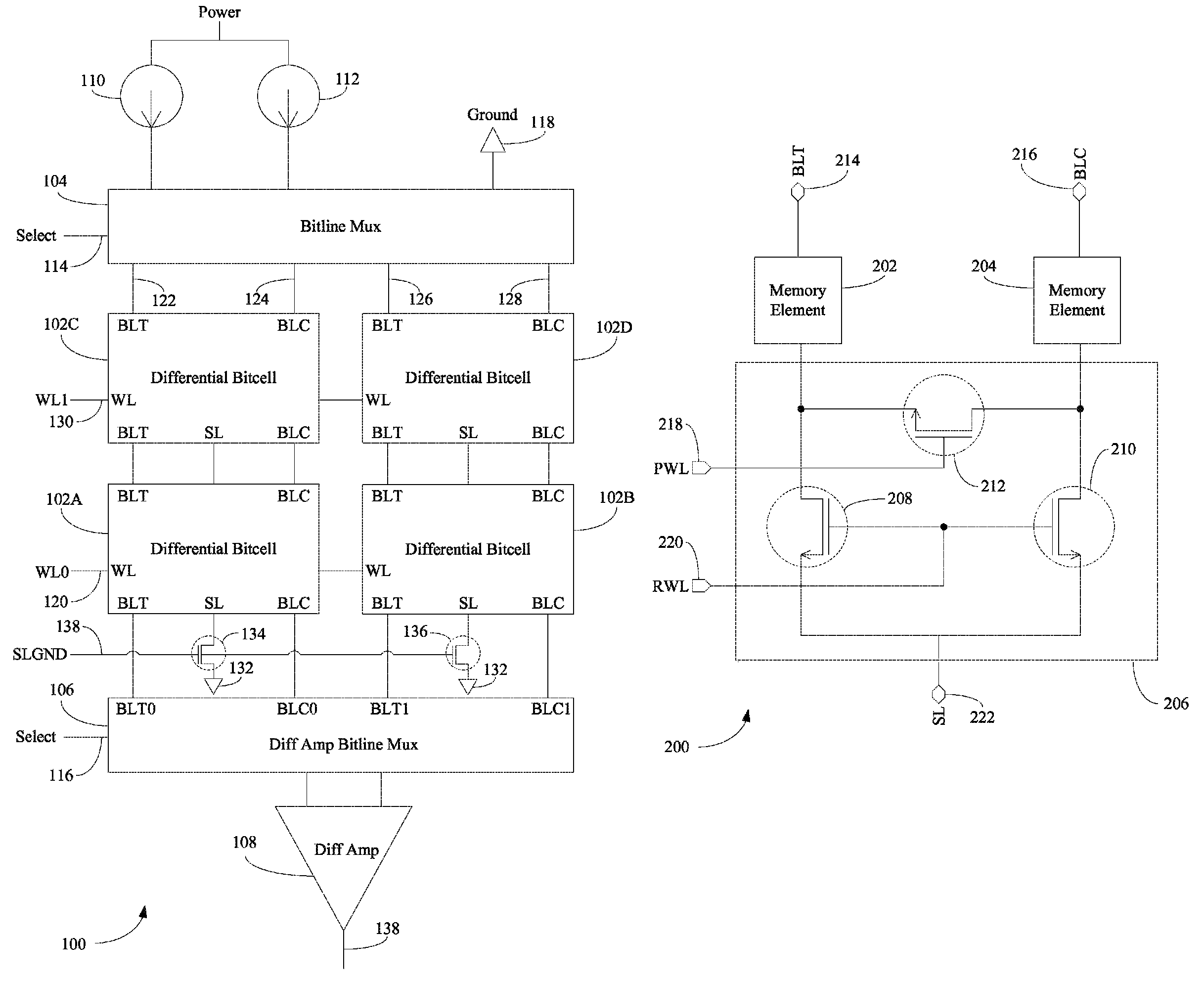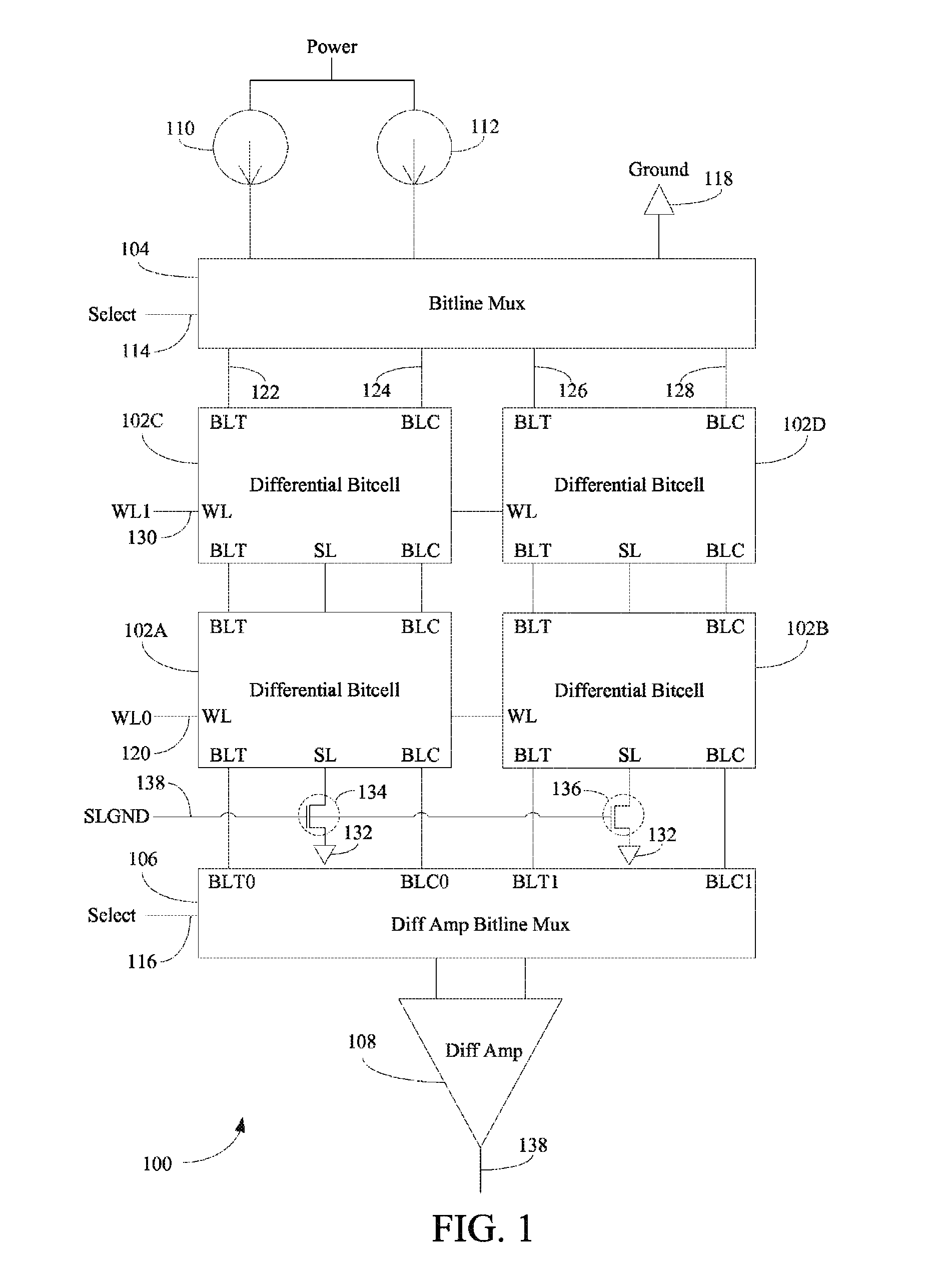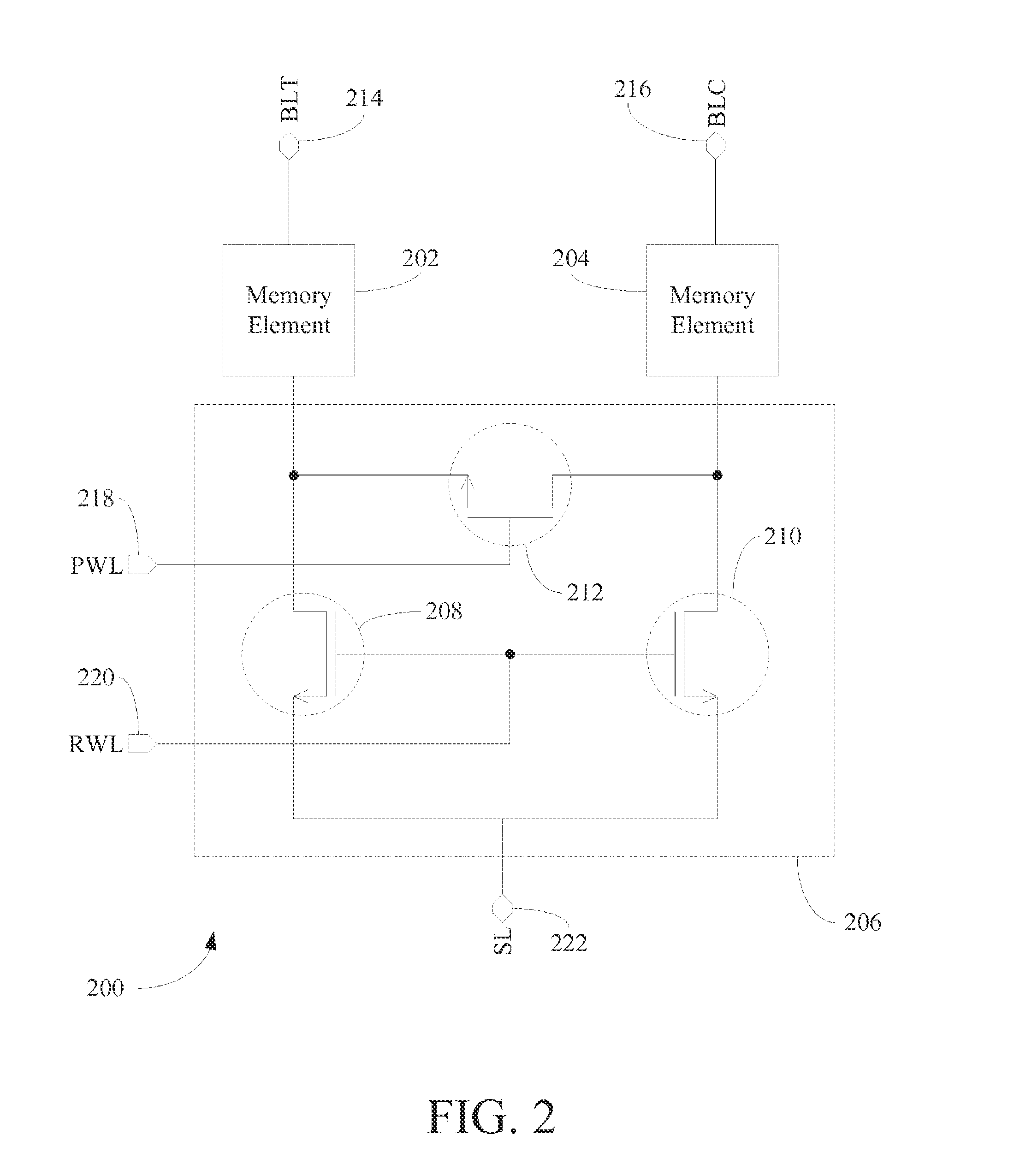Differential bit cell
a differential bit cell and memory cell technology, applied in the field of memory devices, can solve the problems of variances that tend to negatively affect the performance of memory cells, memory devices are becoming more dense, and may introduce various process variations, so as to reduce the mismatch effect of transistors and improve the performance of memory devices
- Summary
- Abstract
- Description
- Claims
- Application Information
AI Technical Summary
Benefits of technology
Problems solved by technology
Method used
Image
Examples
example embodiments
II. Example Embodiments
[0020]FIG. 1 is block diagram of an example memory device 100 in accordance with an embodiment. As shown in FIG. 1, memory device 100 includes differential bit cells 102A-102D, a bitline multiplexor (mux) 104, a differential amplifier (diff amp) bitline mux 106, a diff amp 108, a first current source 110, and a second current source 112. In the illustrated exemplary embodiment, memory device 100 includes four differential bit cells 102A-102D arranged into two rows and two columns (i.e., a 2×2 configuration) for illustrative purposes, though persons skilled in the relevant art(s) will appreciate that additional or fewer differential bit cells and / or additional or fewer rows and / or columns may be employed without departing from the spirit and scope of the present embodiments.
[0021]As will be described below with reference to FIG. 2, each of differential bit cells 102A-102D may include two memory elements. Each of the two memory elements includes an associated ac...
PUM
 Login to View More
Login to View More Abstract
Description
Claims
Application Information
 Login to View More
Login to View More - R&D
- Intellectual Property
- Life Sciences
- Materials
- Tech Scout
- Unparalleled Data Quality
- Higher Quality Content
- 60% Fewer Hallucinations
Browse by: Latest US Patents, China's latest patents, Technical Efficacy Thesaurus, Application Domain, Technology Topic, Popular Technical Reports.
© 2025 PatSnap. All rights reserved.Legal|Privacy policy|Modern Slavery Act Transparency Statement|Sitemap|About US| Contact US: help@patsnap.com



